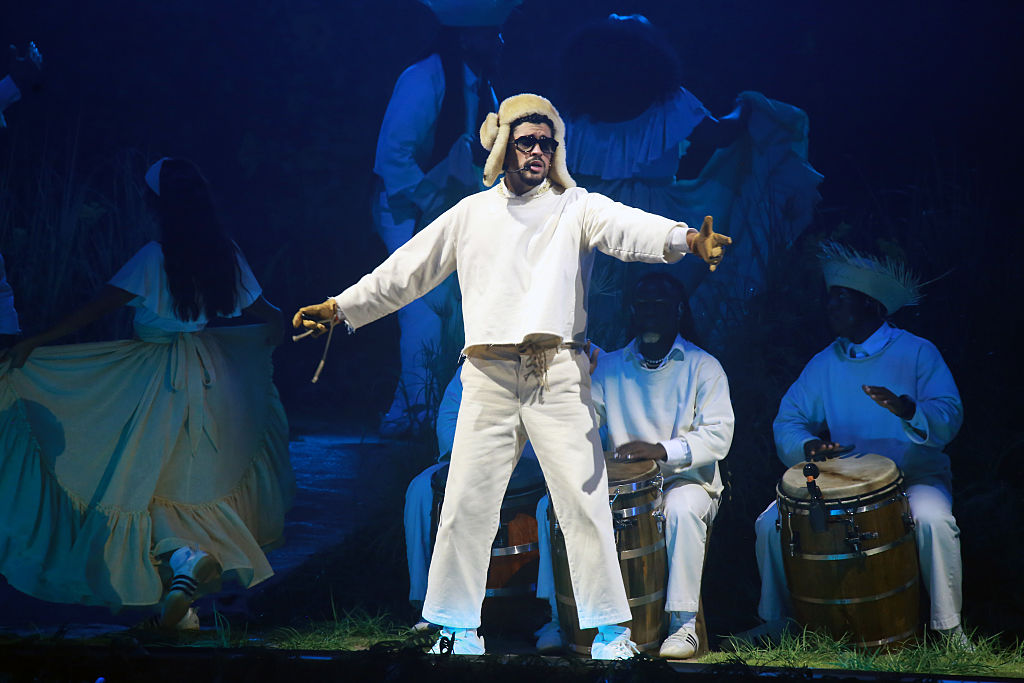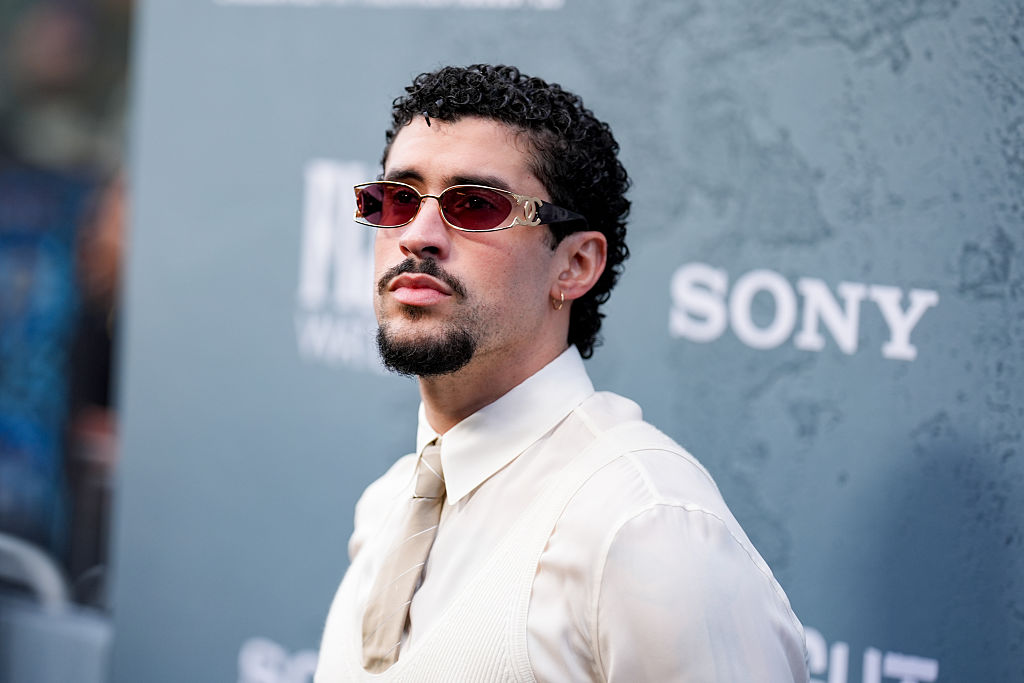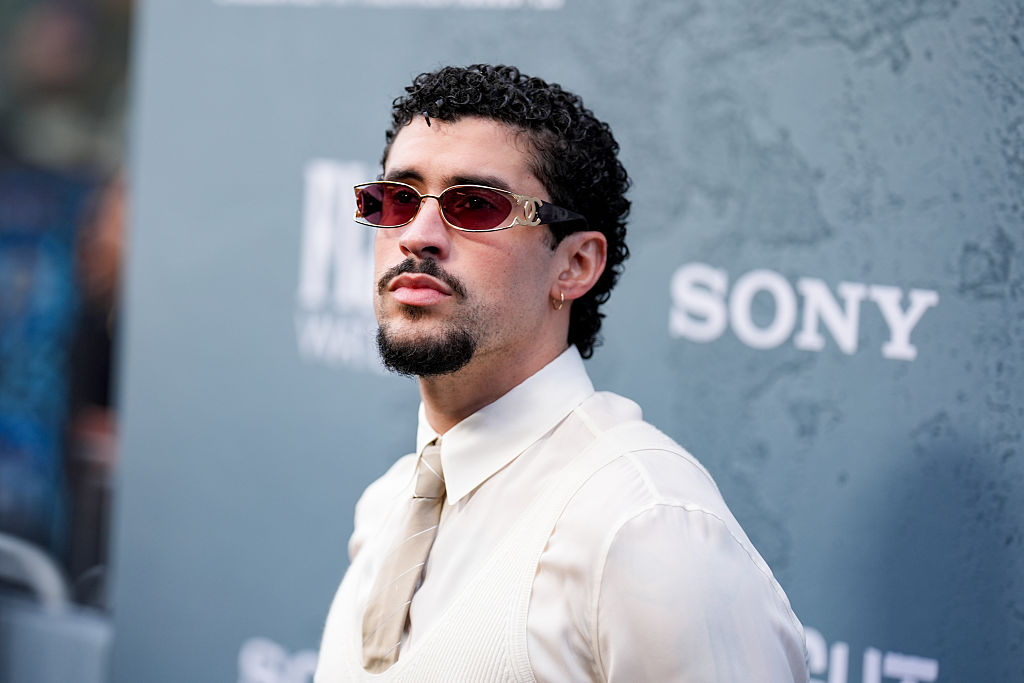Super Bowl

Trending on Billboard Charlie Puth is standing strong in the face of online backlash to the announcement of his upcoming national anthem performance at next year’s Super Bowl LX (Feb. 8, 2026). “I’ll never claim to be as good of a singer as Whitney Houston ever was,” the four-time Grammy nominee wrote on X on […]
Trending on Billboard Luke Combs has performed on many of the most coveted stages around the world, but this two-time CMA entertainer of the year winner would also be open to performing on ‘s biggest stage. During his Nov. 24 appearance on MNF Manningcast, hosted by NFL quarterback greats Eli and Peyton Manning, the discussion […]
From the national anthem to the halftime show, the Super Bowl – held this year in San Francisco 49ers’ home stadium in California – always features several musical performances. Bad Bunny will take the field as this year’s headliner at the half, but no performers have been announced for the national anthem (vote here for […]
Bad Bunny is set to headline the Apple Music Super Bowl LX Halftime Show in 2026. But that leaves a few more open musical positions for others during the NFL’s biggest night — including the pre-game’s national anthem. With a memorable run of artists in the past 10 years taking this slot — think of […]
Bad Bunny attracted the ire of many once it was announced that the Puerto Rican superstar would be the featured performer at next year’s Super Bowl halftime set. Jay-Z, whose Roc Nation has helped put together the highly coveted performance slot, addressed the dustup around Bad Bunny in quick fashion.
TMZ reports that Jay-Z made a brief statement countering all the criticism regarding the decision to have Bad Bunny perform at Super Bowl LX. After the outlet asked Hov his thoughts on the artist born Benito Antonio Martínez Ocasio, the Brooklyn Hip-Hop and business icon initially didn’t want to have a conversation, but gave a quick soundbite.
“They love him, don’t let them fool you,” Jay-Z said regarding the singer and all the backlash Bad Bunny has received.
Jay-Z was clearly on the way to another destination, but graciously signed autographs while remaining tight-lipped about how Roc Nation and the NFL came to their decision.
The pushback against having Bad Bunny perform at Super Bowl LX has been high, with many decrying the fact that he’s a Spanish-speaking artist despite being an American citizen. Turning Point USA, the organization co-founded by the late Charlie Kirk, is reportedly putting together a countering halftime show featuring artists that they feel line up with what the country wants.
—
Photo: Getty

Trending on Billboard
Gloria Estefan and Emilio Estefan headlined an “Icon Q&A” panel on Wednesday (Oct. 22) at Billboard Latin Music Week 2025 in Miami, where they reminisced about their beginnings in the industry, reflected on some of their major achievements and shared their views on topics such as the conservative backlash to Bad Bunny’s selection for the upcoming Super Bowl Halftime Show and the strict immigration policies of the Trump administration.
Presented by BMI, the panel was moderated by Jesús González, vice president, creative, Latin, at the music rights organization, who introduced the power couple as the artists who achieved “truly the first Latin crossover” and “the pillars that this industry has been built upon” after revolutionizing pop music in the ’80s with their Miami Sound Machine.
“I have worked on three Super Bowl Halftime Shows, three Olympic games and produced for six U.S. presidents with 48 events at the White House,” said the No. 1 Latin music producer, noting that he is neither a Democrat nor a Republican. “But … we need to have opportunities. For example, Bad Bunny, who has incredible success and was already part of the Super Bowl with Shakira and Jennifer [Lopez in 2020], has been the subject of major news coverage. I’m very happy with what he has done for Puerto Rico, for his country [with his recent residency at the Coliseo]. And we must have opportunities in different languages. It’s a normal thing.”
“The most important thing for me is that people see the value of Latinos who came here to contribute, to work, and the gratitude we have for being in the best country in the world,” he added, as a Cuban immigrant who truly achieved the American Dream. “I don’t want a child to think they don’t have opportunities in this great country.”
Meanwhile, Gloria expressed her concern over the current government’s aggressive deportation campaign and the loss of respect for other people’s opinions. “We’re human beings, and we’re kind of split down the middle on probably everything that exists. But one thing that’s always inspired me about this country that I deeply love and respect is the fact that there’s always been respectful discourse, and after every debate, people shook hands. And it scares me to see that changing,” the legendary singer-songwriter said.
Have you played Billboard’s Latin Music Week Crossword?Play now!
“And the freedoms we share must be defended, mi gente. There is no reason to be cruel to people. Yes, we absolutely need our border to have a legal process. But there’s no need to take someone that has put years of work into this country, that has sacrificed … They are not criminals!” she continued, receiving a roaring applause from the audience at The Fillmore Miami Beach. “It scares me to see what we’re seeing. It scares me. And I will always speak up because freedom must be defended.”
This year, Gloria Estefan is celebrating five decades in music and four decades of “Conga,” the megahit by Miami Sound Machine that launched her to stardom. Meanwhile, Emilio Estefan just topped the list of the Top Producers of the 21st century on Billboard‘s Hot Latin Songs chart, with 14 No. 1 hits between 2000 and 2024 as a producer for artists including Carlos Vives, Paulina Rubio and, of course, Gloria Estefan.
With over 30 years of history, Latin Music Week is the largest and most important gathering of Latin artists and industry executives worldwide. The event coincides with the 2025 Billboard Latin Music Awards, which will air on Thursday (Oct. 23) on Telemundo and Peacock, and where Bad Bunny will be honored as the Latin Artist of the 21st Century.
Bad Bunny, who, last we checked, is a citizen of the United States and has become the enemy of right-wing criticism from the MAGA faithful. Bad Bunny can now breathe a sigh of relief as the NFL has decided to keep the Puerto Rican superstar on the bill for the Super Bowl LX Half Time Show.
In a report from the Associated Press, NFL Commissioner Roger Goodell, no stranger to combating controversy around musical acts on one of the biggest stages in the world, offered a brief statement to those who decried the decision to have Bad Bunny perform at Super Bowl LX.
“It’s carefully thought through,” Goodell said during a news conference after the NFL’s annual Fall League meeting. “I’m not sure we’ve ever selected an artist where we didn’t have some blowback or criticism. It’s pretty hard to do when you have literally hundreds of millions of people that are watching.”
Goodell continued, “We’re confident it’s going to be a great show. He understands the platform that he’s on, and I think it’s going to be exciting and a united moment,” concluding the defense of the Spanish-speaking American singer with, “He’s one of the leading and most popular entertainers in the world. That’s what we try to achieve. It’s an important stage for us. It’s an important element to the entertainment value.”
President Donald Trump claimed that he didn’t know who the singer born Benito Antonio Martínez Ocasio was during a Newsmax interview. Further, Turning Point USA, the right-wing group founded by the late Charlie Kirk, said it would like to put on a halftime show of its own in defiance of the NFL’s move.
On social media, fans of Bad Bunny and the NFL alike are chiming in with thoughts regarding Goodell’s decision.
—
Photo: Getty
Bad Bunny, who, last we checked, is a citizen of the United States and has become the enemy of right-wing criticism from the MAGA faithful. Bad Bunny can now breathe a sigh of relief as the NFL has decided to keep the Puerto Rican superstar on the bill for the Super Bowl LX Half Time Show.
In a report from the Associated Press, NFL Commissioner Roger Goodell, no stranger to combating controversy around musical acts on one of the biggest stages in the world, offered a brief statement to those who decried the decision to have Bad Bunny perform at Super Bowl LX.
“It’s carefully thought through,” Goodell said during a news conference after the NFL’s annual Fall League meeting. “I’m not sure we’ve ever selected an artist where we didn’t have some blowback or criticism. It’s pretty hard to do when you have literally hundreds of millions of people that are watching.”
Goodell continued, “We’re confident it’s going to be a great show. He understands the platform that he’s on, and I think it’s going to be exciting and a united moment,” concluding the defense of the Spanish-speaking American singer with, “He’s one of the leading and most popular entertainers in the world. That’s what we try to achieve. It’s an important stage for us. It’s an important element to the entertainment value.”
President Donald Trump claimed that he didn’t know who the singer born Benito Antonio Martínez Ocasio was during a Newsmax interview. Further, Turning Point USA, the right-wing group founded by the late Charlie Kirk, said it would like to put on a halftime show of its own in defiance of the NFL’s move.
On social media, fans of Bad Bunny and the NFL alike are chiming in with thoughts regarding Goodell’s decision.
—
Photo: Getty
As of press time Bad Bunny is still scheduled to perform at the Super Bowl Halftime Show in February. While MAGA country continues to call for a replacement of the Puerto Rican superstar, it seems like they’re getting some support from the host of KIRO Newsradio, Gee Scott.
Gee Scott, who also was no fan of Kendrick Lamar’s superb Super Bowl Halftime Show earlier this year, went on The Gee and Ursula Show and actually said he’d like to see someone else take on halftime duties as he won’t “understand” what Bad Bunny is saying on stage the same way he didn’t understand what Kendrick Lamar did with his show.
Now that Bad Bunny is set to take on the big stage this coming February, Scott doesn’t like that choice much either and made no bones about it on his program.
Love News? Get more! Join the Hip-Hop Wired Newsletter
We care about your data. See our privacy policy.
During a recent radio segment, Scott revealed that he agreed with conservatives and MAGA country over their disdain for Bad Bunny.
“My daughter loves Bad Bunny, a lot of people do, but I am actually on the side of the Conservatives and whoever out there,” Gee said. “In 2020, it was Shakira and Jennifer Lopez, 2021 was The Weeknd, and in 2022 it was Dr. Dre, Snoop, and Eminem. People are thinking, ‘Can we get something for us next time?’ Then you gave them Kendrick Lamar last year, and they pushed the limits.
“I’m not saying George Strait, but Jay Z, who makes the decision, can you give us something? Give some love,” Gee continued. “You’re going to hit me with Kendrick Lamar last year, and I didn’t understand that. Then you hit me with Bad Bunny, I’m not going to understand that either.”
Well, given the current state of America, there’s always a chance that he and MAGA country may get their wish as we have a vindictive orange overlord sitting in the White House who just may issue an executive order banning Bad Bunny from doing the Super Bowl. It really is that crazy in this timeline y’all voted us into.
Then again, Gee Scott and others can always enjoy the Turning Point USA counter-halftime show to the Super Bowl that’ll allegedly headlined by “superstars” like Kid Rock and Lara Trump.
Decisions decisions.
What do y’all think about Gee Scott not feeling Bad Bunny for the Super Bowl after saying he didn’t like Kendrick Lamar either? Let us know in the comments section below.
—
Photo: Getty
Samuel L. Jackson didn’t exactly know what he was getting into when he first agreed to be a part of Kendrick Lamar‘s Super Bowl Halftime Show. The veteran actor and civil rights activist stopped by the Mad Sad Bad podcast and talked about his turn as Uncle Sam during the Super Bowl earlier this year, […]

 State Champ Radio
State Champ Radio 





